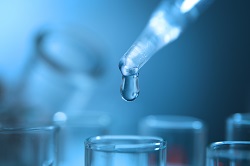Water monitoring device will provide fast diagnosis of deadly bacteria
Waterborne infectious diseases constitute a major burden on human health. Contaminated water can lead to outbreaks of diarrhoea, cholera, dysentery, typhoid and polio. Such drinking water is estimated to cause 502 000 diarrhoeal deaths each year, according to the World Health Organization. That’s why ensuring the microbiological safety of water is crucial. A team of researchers backed by the EU-funded WaterSpy project is developing a device for pervasive and online monitoring of tap water. It’s a portable laser-based water quality analyser that can be utilised at critical points on water distribution networks. It can provide a safety reading in a few hours rather than days, helping water utilities, public authorities and regulators save time and resources. The prototype is ready and the team will test it in two sites in Genova, at the Prato Water treatment plant and the entry point of the Genova water distribution network. WaterSpy will focus on monitoring three of the most deadly bacteria strains: Escherichia coli, Salmonella and Pseudomonas aeruginosa. As explained in a press release on the project website, these bacteria are often hard to detect as the concentration of contaminants can be low. “The current process involves water samples being taken and sent to a remote laboratory, and with bacteria traces often so small, a period of 24 hours is needed to allow the pathogens to cultivate.” As a result, a full analysis could take up to 2-3 days. However, the research team hopes to get results in just 6 hours, about 12 times faster than the current standard. Combining light and sound WaterSpy relies on a laser configuration, photodetectors and ultrasound particle manipulation. The same press release explains: “It works by first gathering small traces of bacteria and then detecting them with a laser.” Ultrasound is used to congregate the bacteria in the water sample in order to enhance the detection and sensitivity. A measurement technique called attenuated total reflection will be used, enabling a sample to be examined directly in the liquid state. “Beams of infrared (IR) light are sent into a diamond over which the water flows. The IR light then reflects off the internal surface in contact with the water sample, before being collected by a detector as it exits the crystal.” The ongoing WaterSpy (High sensitivity, portable photonic device for pervasive water quality analysis) project was set up to develop water quality analysis photonics technology suitable for online field measurements. For validation purposes, WaterSpy technology will be integrated into an existing commercial water quality monitoring platform in the form of a portable add-on. According to the team, WaterSpy technology is relatively cheap and will comply with strict requirements in terms of specificity and sensitivity levels in the wake of new drinking water regulations. For more information, please see: WaterSpy project website
Countries
Cyprus, United Kingdom



